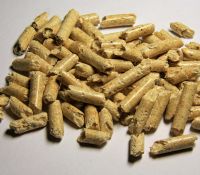Here are the most interesting facts about Deerhaven Renewable Generating Station, which is the largest biomass power plant in the United States.
- Name & Location
- Officially: Deerhaven Renewable Generating Station (DHR) / Gainesville Renewable Energy Center.
- Located in Gainesville, Florida, adjacent to the Deerhaven Generating Station.
- Capacity & Operation
- Nameplate capacity: about 116.1 MW.
- Net summer / winter capacity: ~102.5 MW.
- Started commercial operations in December 2013.
- Technology & Fuel
- Uses a bubbling fluidized-bed boiler.
- Fuel: locally sourced woody biomass / wood waste (residues from forestry, sawmills, urban wood waste).
- Uses natural gas as a startup fuel.
- Ownership
- Owned by Gainesville Regional Utilities (GRU).
- Environmental Systems
- It has emissions control: fabric filter baghouse for particulates, SCR (Selective Catalytic Reduction) for NOₓ, and a dry sorbent injection system (for acid gases, SO₂, mercury) when needed.
- The Deerhaven site (where it’s located) operates with zero liquid discharge — i.e., process waste water isn’t discharged into surface waters.
- Role in GRU’s Energy Mix
- The biomass plant helps diversify GRU’s fuel mix, reducing dependence on fossil fuels.
- GRU projects that up to ~30% of its energy could come from this biomass facility.
- It also contributes to reliability: as older fossil‐fuel units retire, the biomass plant provides a stable, local renewable generation source.
- Fuel Supply & Sustainability
- The wood waste is sourced locally (“leftover clean wood waste”), which supports sustainable use of forestry residues.
- Because the fuel is “waste wood,” it helps reduce other forms of waste.
- Regulatory & Planning Aspects
- The plant was certified by the Florida DEP (Department of Environmental Protection) with a woody biomass boiler and steam turbine.
- In GRU’s planning documents, the capacity and environmental design are factored in.
- According to GRU’s site plan, the biomass unit was purchased by GRU in November 2017.
- Electricity Generation
- The plant produced 287.1 GWh per year, according to recent data.
- It is among the more significant wood-waste biomass plants in the U.S.
Significance & Impacts
- Renewable Energy Contribution: As a woody biomass plant, DHR contributes to the renewable energy portfolio, helping to reduce carbon emissions relative to fossil fuels (though biomass is not zero-carbon, it can be more sustainable if the feedstock is well managed).
- Economic Impact: Provides a local market for wood waste (forestry residues, urban wood), which can help local forestry and wood-processing industries.
- Energy Security: Because the biomass is local, it somewhat insulates GRU from fossil fuel price volatility.
- Environmental Trade-Offs: While biomass is renewable, burning wood produces CO₂; the advantage is that the wood is waste and regrowth can reabsorb carbon, depending on forestry practices.
- Technical Challenges: Fluidized-bed boilers are complex, but they’re good for burning heterogeneous fuels like wood waste.
